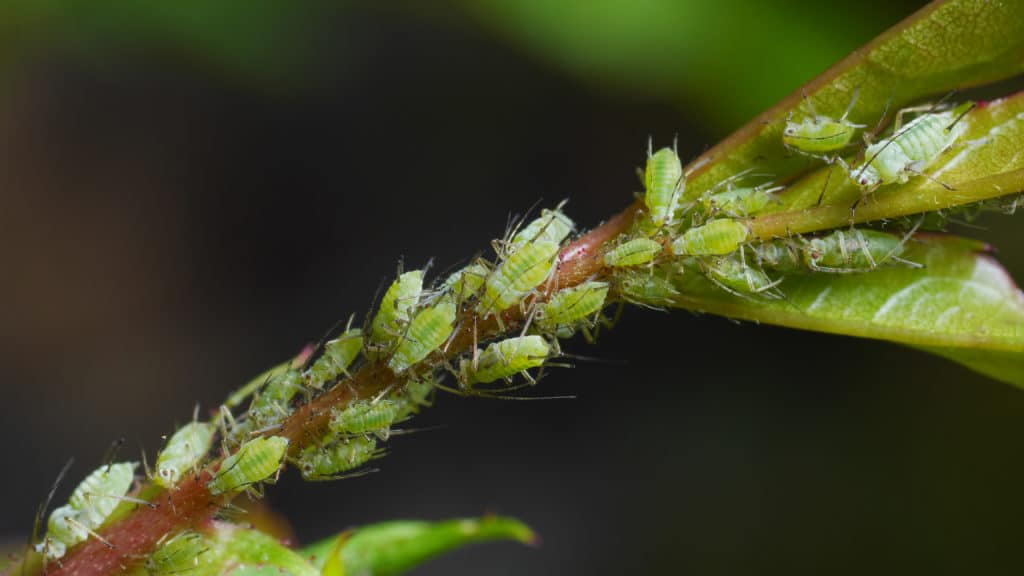
Aphids are small sap-sucking insects and individuals of the super-family Aphidoidea. Common names include greenfly and black fly, although people inside a species can change broadly in color. The group incorporates the soft white woolly aphids. A ordinary life cycle includes flightless females giving living birth to female nymphs without the association of male bugs. Developing quickly, females breed abundantly so that the number of these creepy crawlies increases rapidly. Winged females may create afterward within the season, permitting these creepy crawlies to colonize modern plants. In mild districts, a stage of sexual propagation happens within the harvest time, with the creepy crawlies frequently overwintering as eggs. The life cycle of a few species includes an variation between two species of have plants, for case between an yearly edit and a woody plant. A few species nourish on as it were one sort of plant, whereas others are generalists, colonising numerous plant bunches. Approximately 5,000 species of aphid have been portrayed, all included within the family
APHID DAMAGE
Nymphs (babies) and grown-ups nourish on plant juices, assaulting clears out, stems, buds, blooms, natural product, and/or roots, depending on the species. Most aphids particularly like juicy or young leaves. A few, such as the green peach aphid, bolster on a assortment of plants, whereas others, such as the blushing apple aphid, center on one or fair a number of plant hosts. Look for misshapen, twisting, hindered, or yellowing takes off. Be 100% sure to check the undersides of leaves; aphids like to hide there.
If the leaves or stems are secured with a sticky substance, that’s a sign that aphids may have been tasting sap. This “honeydew,” a sugary fluid created by the creepy crawlies as waste, can pull in other creepy crawlies, such The life cycle of a few species includes an variation between two species of have plants, for case between an yearly crop and a woody plant. A few species bolster on only one sort of plant, whereas others are generalists, colonising numerous plant groups. About 5,000 species of aphid have been depicted, all included within the family
DIY SPRAY TO CONTROL APHIDS
In a spray bottle, combine 5 cups water, 2 cups alcohol, and 1 tablespoon grease cutting soap.
Caution: Some plants can be sensitive to these, always test a small area first, do not use in the sun. Watch the plant for a 2 days for any adverse reactions before applying more.
